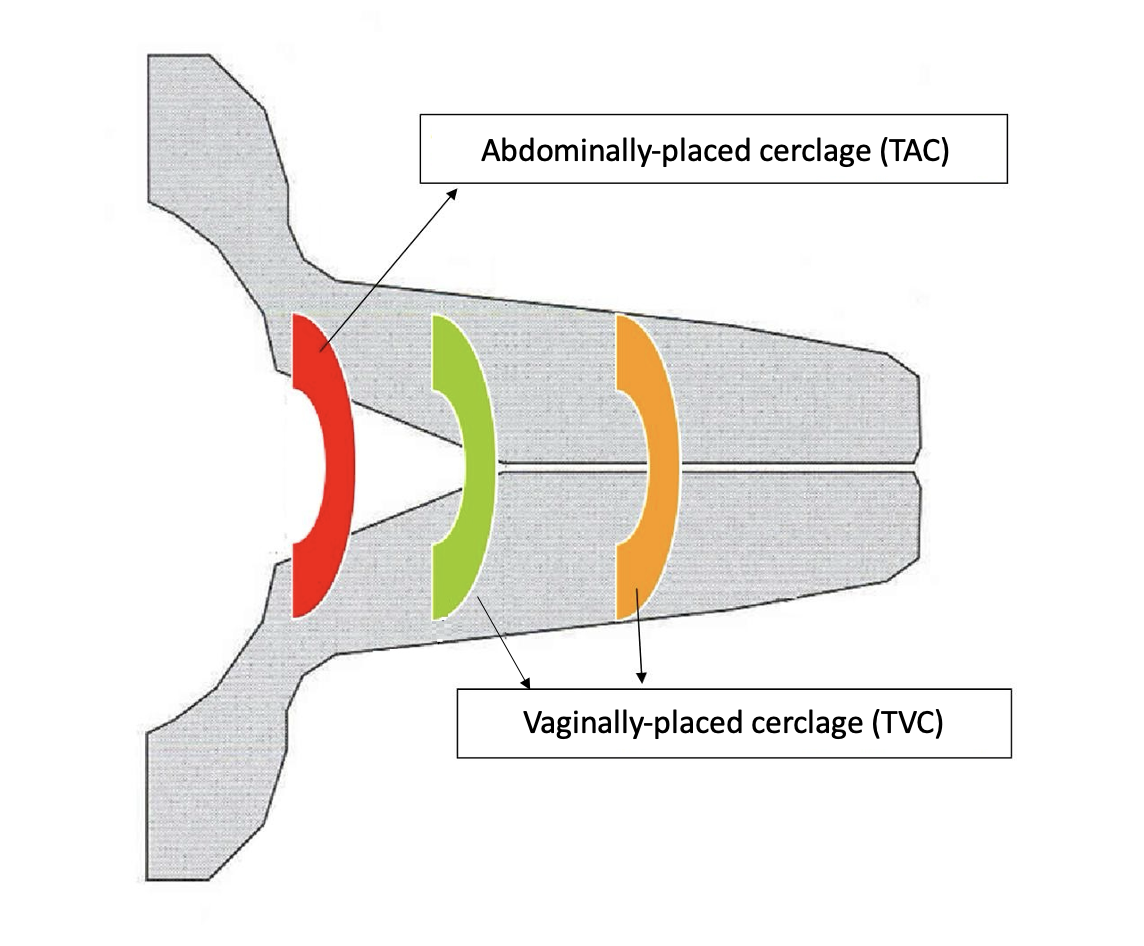About
Background
Recent studies have shown that if someone has had a caesaeran section in labour (when the cervix is opening) they are more likely to have a preterm birth (delivery before 37 weeks of pregnancy) or mid-trimester loss (a loss between 14 and 24 weeks of pregnancy) in the future. We have found that in people who have had a caesarean section in labour have a 5 to 10 out of 100 chance of preterm birth in a later pregnancy.
For people who have had a caesarean section, followed by a preterm birth or a mid-trimester loss in their next pregnancy, are very likely to have another preterm birth or loss.
Cervical cerclage
Currently we do not know which treatments are most effective to stop this happening, but a cervical cerclage (stitch) may help.
Placing a stitch in the cervix is a common treatment for people at high risk of preterm birth. This is often placed during pregnancy. It's a small surgical procedure through the vagina where the stitch is placed around the cervix. This is called a transvaginal cerclage, or TVC.
Sometimes these stitches do not work and instead a stitch can be placed in the cervix through an abdominal procedure involving a cut in the tummy. This is called a transabdominal cerclage, TAC. This is a longer operation, performed under general or regional anaesthesia, with more recovery time. It means that a caesarean section is needed to deliver any future babies.
Although TVC is simpler, they may not work as welll as TAC in this group. This may be because the damaged scar tissue from the previous caesarean section may be above the level of the vaginally-placed stitch but can be reached and repaired by the abdominally-placed stitch. See the image below showing the different types of cerclage.

Aims of this study
1) Find out how effective TACs are compared to TVCs for people who have had a mid-trimester loss or spontaneous preterm birth after a caesarean section in labour
2) To compare the pregnancy outcomes of who had TAC before pregnancy or early in their pregnancy
Methods
This is a multi-centre randomised control trial (RCT). This means that people who sign up for this study have either a TVC or a TAC. All those taking part in the study will be followed up in prematurity clinic after having the cerclage placed.
In addition to evaluating the two cerclages, we are inviting women who have not been randomised in this study to take part in this observational group. We will be asking if they are happy for us to collect information about what happens to them in this pregnancy and their baby after birth.
Multiple hospitals are participating in this study. See 'Study Sites' for a full list of participating hospitals.
Eligibility Criteria
| Inclusion | Exclusion |
| Willing and able to give informed consent | Are >14 weeks pregnant at time of randomisation * |
| Age 16 or above | Already have a cerclage or Arabin pessary in situ |
| Previous in-labour caesarean section (4-10cm) followed by MTL (>14 weeks) or preterm birth (<30 weeks) | Have a history of preterm birth (spontaneous/iatrogenic) prior to the in-labour caesarean section |
| Are pregnant but <14 weeks at time of intervention (Group A) | Are not planning another pregnancy |
| OR are not yet pregnant but considering a future pregnancy (Group B) | Are pregnant and expecting more than one baby (multiple pregnancy) |
* women >14 weeks pregnant are eligible for the observational arm
Additional information
If you are interested in participating in this study please find more information at the 'Information for Patients' page .
If you are a healthcare professional who would like more information, please find the study protocol here or email above-study@kcl.ac.uk.
